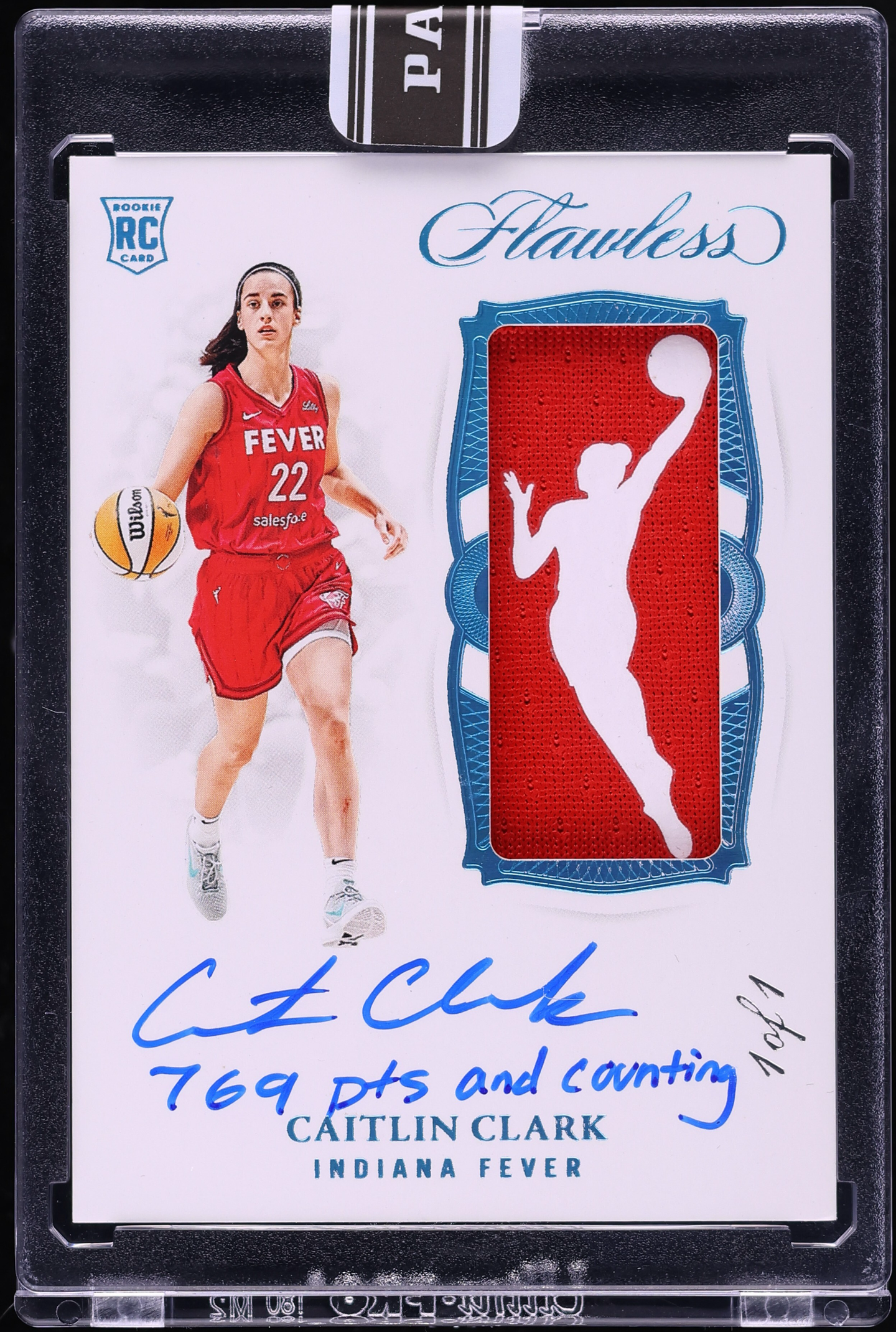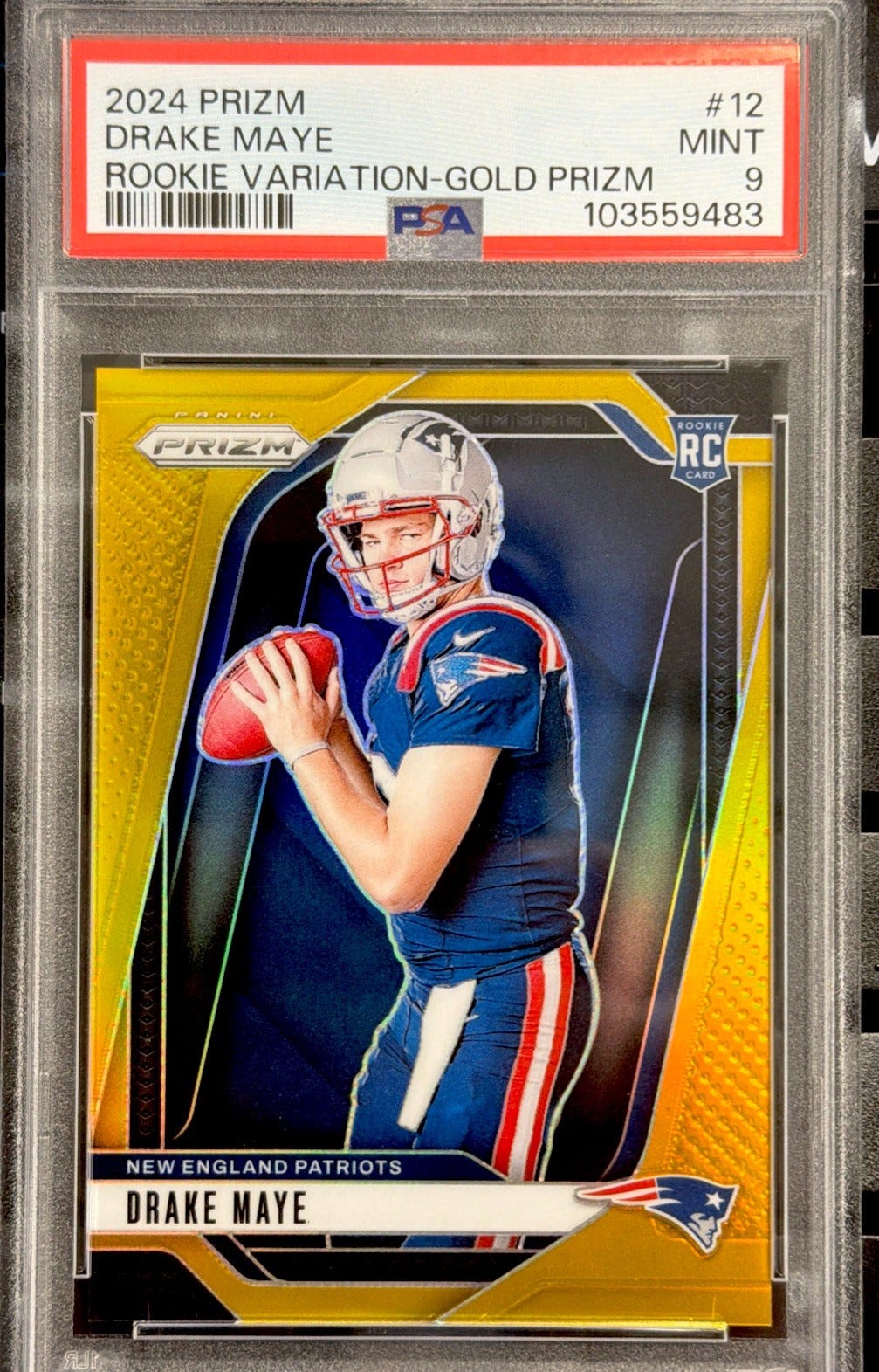Ted Williams
A couple of Shohei Ohtani cards sell for more than $30,000
Two Shohei Ohtani entries lead off our column, with both exceeding $30,000. They’re different examples of the same issue: an autographed 2018 Bowman Chrome Red Refractor. One sold for $35,100 on 70 bids, the other for $30,300 on 69 bids. Not to say that collectors tend to get overexcited, but… those figures amount to more than $10,000 per win at this writing. (Through his first six starts on the mound, Ohtani was 3-1 with a 3.58 ERA.) Or you could say it’s around $6,000 per homer. (Ohtani’s stats through his first 73 at-bats: five HRs with a .342 batting average.)
Therein lies the magic of Ohtani. Even though his sampling of stats is small, he appears to be as he was advertised: an ace-caliber pitcher who doubles as a sweet-swinging lefty—with power—as a hitter. So perhaps years from now, these $30,000-plus prices will seem like steals. What do you think?
TEDDY BALLGAME
A beautiful-condition example of Ted Williams’ 1939 Play Ball card sold for $16,293 last month, landing at No. 8 on our chart. It’s a classic of the genre—an underrated card of the legendary Boston slugger.
Just five days earlier, another Williams treasure—this one a real rarity—brought $15,000… and it was in pretty shabby condition. The item in question? A 1950 Menko Japanese issue that features color art of the Red Sox hero on the front—an attractive illustration that looks sort of like a wood engraving. The text on the back, as the seller explains, reads, “America Major League,” “Home run king,” “Outfielder,” “T for Ted” and “Williams,” along with the number 2857.
The Menko card is part of a series catalogued as JCM125. And while it’s ungraded, the truly scarce card has been authenticated as genuine by PSA.
GIBBY AND DENNY
It’s fitting that Bob Gibson sneaked onto our Top 10 list, with a near-perfect PSA 9 specimen of his rookie card (a 1959 Topps) selling for a hair under $16,000. After all, this is the 50th anniversary of the magical 1968 campaign, when Gibson was near-perfect all season long.
Gibson was 32 years old in 1968, but he had his best year among a career full of great seasons. The big right-hander started 34 games for the Cardinals in ’68, completing 28 of them (who needs a bullpen?) and pitching 13 shutouts. He also had a 22-9 record (that’s a .710 winning percentage) and struck out 268 batters in 304 innings. But Gibby’s most amazing stat was his ERA—a miniscule 1.12. If not for three pre-1915 hurlers, Gibson would be the single-season record-holder for that stat.
Amazingly, another pitcher that season overshadowed Gibson, or at least shared his shadow: Dennis McLain. The Detroit Tigers’ ace had an astounding 31-6 record (it’s the last time we’ve seen a 30-game winner). He also had a 1.96 ERA and 280 Ks in 336 innings. McLain started 41 games and completed 28, tossing six shutouts in the process.
Of course, McLain’s career fizzled fairly quickly: He was out of baseball five years later, at only 29 years old. As such, McLain’s rookie card has nowhere near the value of Gibson’s. Recent sales on eBay show that several McLain 1965 Topps cards graded at PSA 8 got away for prices between $75 and $100.
In fact, a nice pairing—if you collect fun mini-themes—would be 1969 cards of both Gibson and McLain, because the stats on the reverse reflect their eye-popping 1968 numbers. And price-wise, they’re a bit cheaper than the hurlers’ rookie cards. A 1968 Gibson’s is $175 to $225 if in 8 condition (a 9 will set you back around triple those prices), while a 1969 McLain goes for $50 to $75 in 8 condition.
LOTS AND LOTS
A group of 15 Topps baseball cards from 1965 that each graded out at PSA 10 were recenlty offered at auction.
The lot was pricey at $32,000 in a Buy It Now sale, but it obviously had appeal, whether the (well-funded) buyer intends to flip them individually or is working on a Gem-Mint ’65 set.
The lot was low on Hall of Famers—only Billy Williams, the longtime Chicago Cubs outfielder. And the closest thing to a minor star was Jim Perry, who pitched for 17 seasons, compiling a 215-174 record. Everyone else in this lot was a common (no offense to any of them!): Joe Amalfitano, Ed Bailey, Danny Cater, Roger Craig, and Chuck Hinton, for example. But they were perfect-10 commons, and you just don’t see many 10s among trading cards printed five decades ago.
FREDDY FEVER
Milwaukee Brewers rookie right-hander Freddy Peralta got the call to start on May 13 at Colorado—yes, baseball’s most hitting-friendly park. And what did he do? He turned in a record-setting performance by striking out 13 Rockies in 5 and 2/3 innings, allowing no runs and only one hit.
The day after, a host of Peralta cards sold on eBay at prices many multiplies higher than they would have a few days earlier:
• $711 for an ungraded 2017 Bowman Chrome signed Purple Refractor.
• $700 for a 2017 Chrome Red Refractor graded 9.5, with a 10 for the autograph.
• $500 for a 2017 Chrome Gold Refractor graded PSA 10 and autographed by the 21-year-old.
ON THE OUTSIDE
Who just missed our Top 10 this time? The numbers “7” and “714” are your clues. Easy enough, right?
The “7” is Mickey Mantle. A 3-grade 1952 Topps card of the Magnificent Yankee sold for $15,500—a deal compared to a similar-condition 1952 Mantle card that ranked at No. 5 on our list at $25,600.
And the “714” can only be Hank Aaron, based on his career home run total. A 1955 Topps Aaron card graded PSA 9 sold for $15,102 in early May. The ’55 was actually Aaron’s second-year card. His rookie, of course, is a 1954, which (as we saw earlier this year) sells for upwards of $22,000 if in 8 condition.








